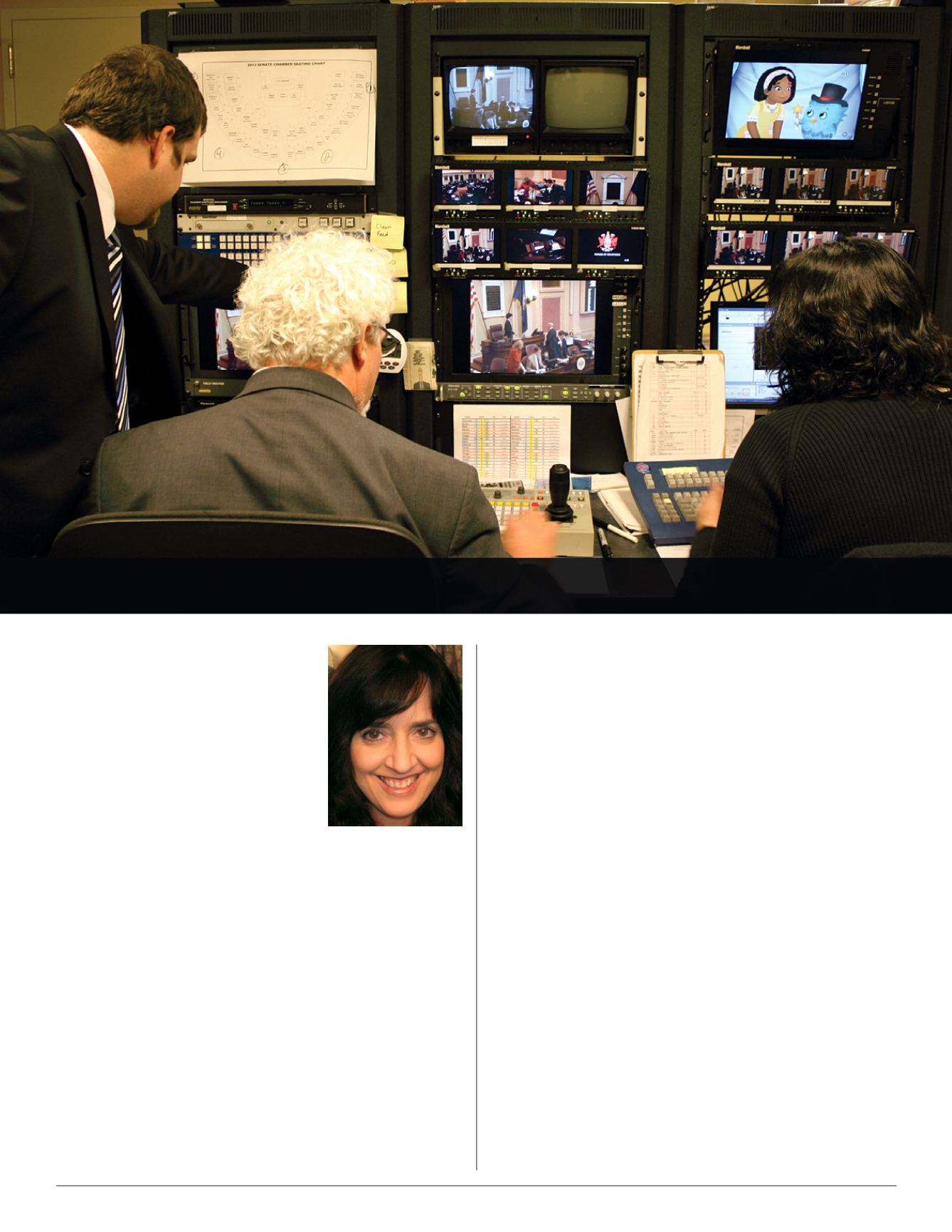
V
irginia
C
apitol
C
onnections
, S
pring
2013
12
In
The Wonderful Wizard of Oz
,
Dorothy and her friends travel to the
Emerald City, the capital of Oz, to see
the Wizard because they believe he is
the only person capable of solving their
problems. When the Great and Powerful
Wizard bellows the famous phrase, “Pay no
attention to that man behind the curtain!”,
he does so out of fear that the illusion of
magic in what he does will be lost if others
become aware of what goes on behind the
scenes.
When the Virginia General Assembly is in session here in the
capital city of Richmond, the public’s attention is focused primarily
on the 140 legislators who have been elected to work on their behalf
and make decisions on matters that impact their lives. But while the
Senators and Delegates are the faces of Virginia government that
are the most familiar to the public, there are many others working
tirelessly behind the scenes in order to make the magic of the whole
legislative process happen. From the Clerks to the Legislative Staff
to the Capitol Police and beyond, these men and women not only
make the legislators’ jobs easier, but often make the seemingly
impossible possible.
When it comes to giving Virginians a sneak peak into a little
of the magic that happens at their Capitol, there’s another handful
of men and women behind the curtain—operating controls that are
actually somewhat similar to the Wizard’s—in order to bring the
images of the proceedings to the big screen. That’s because here
in Virginia, we believe that transparency is the essence of good
government.
Otto von Bismarck once said, “Laws are like sausages, it is
better not to see them being made.” He has also been quoted as
saying “Politics is not an exact science.” and “Politics is the art of the
possible.” Whether it’s a science or an art, politics is ultimately an
integral part of lawmaking. And the system of making laws should
be open and transparent to the public at large, even if the process can
become ugly or too political. Transparency in government creates a
more involved citizenry which, in turn, makes the legislative process
more effective for everyone.
Most people are used to—or at least aware of—the many
technologies that now connect us to the rest of the world with just
a touch of a screen, and it’s easy to take that access for granted.
We often don’t even realize that there’s still a human component
behind it all. In the case of the technologies that allow the Senate
and House sessions to be seen throughout the Capitol, broadcasted
on local television, and streamed live on the internet, there is still a
human connection to it all. A small group of men and women operate
the controls to help broadcast to the masses each day.
Those of us who work in the Senate and House control rooms
are part of the crew at the Commonwealth Public Broadcasting
Corporation’s Capitol Studio in the General Assembly Building,
which is home to ThisWeek in Richmond as well as other shows that
air throughout each session. The studio also provides a connection
for legislators and government officials to various news outlets
across the country throughout the year.
But perhaps one of the most important services the studio
provides is the gavel to gavel coverage of the regular sessions of both
the House and Senate. The proceedings are recorded, broadcasted
and streamed live to help provide true transparency in Virginia’s
government. We also generate a clean feed of footage for news
organizations throughout the state. And when the General Assembly
makes news, that footage is often seen on various national shows.
The Capitol Studio got its start in the mid-1970s to help fulfill the
mission of Virginia Public Television, specifically WNVT/WNVC
Pay No A
t
t
e
n
t
i
o
n
t
o
The Men (And Women) Behind the Curtain
By Sarah Alderson
In the Control Room
(left to right)
Bryant Dameron,
Mark Helfer,
and Sarah Alderson.


